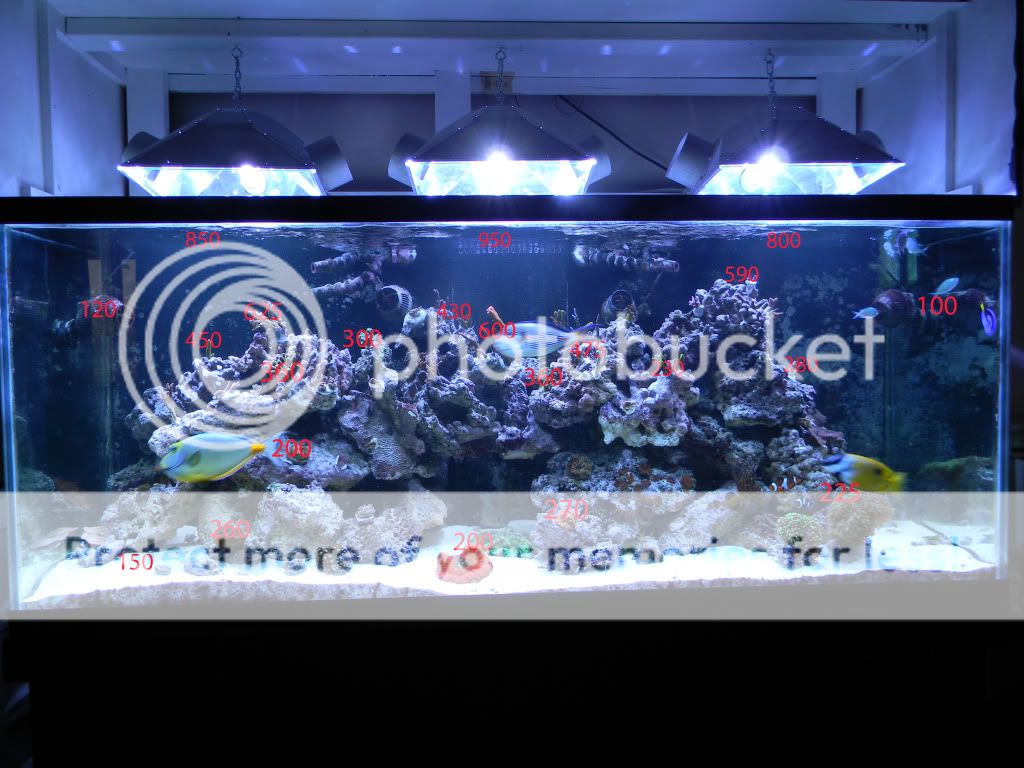I saw something about this on Marks thread, and its very interesting to consider:
http://www.reefcentral.com/forums/showpost.php?p=23937521&postcount=305
The issue is that we may be over-lighting our tanks because of the amazing output of the ATI T5 light fixtures. Its an interesting question I have run into twice recently - first, my biggest LFS was saying that he wasn't as interested in bringing in Acros from Australia any more because the tanks they were going into were over-lit. He said they needed way less light to keep their color.
Second, I started going to another LFS that uses all 8 bulb Ati LED power modules. They only run 6 bulbs in the fixtures, 5 blue and one purple, and only the Royal blue LEDs. The fixtures are about 2 feet off the water for shallow ~14-16 inch deep coral show tanks. The corals are doing well. This owner said bringing them any lower caused issues. To me they looked way too high, over a couple of tanks they were closer to 3 feet above the water. The corals looked good though - and no one wants to kill their corals with too little light when they have it available.
On the initial tank of the pair of tanks that I have now, I had very good success with 8 bulbs about 6-7 inches off the water in a 22inch tall tank. I measured par at the dead center of the tank and saw values about 450 or so. I would drop the light lower and sometimes see faster growth, but often worse color in some corals. Specifically, the Stuber Acro looked amazing with light green body and vibrant blue tips near the bottom front of the tank, but a frag of the same coral near the top turned brownish green and the blue almost went away. On that tank I ran a more white mixture with at least one purple bulb.
Also, on that tank, Red planet that was getting 425 PAR was nicely red but lots of green along the base was visible.
I've been seeing more success on my shallow SPS reef with the lights higher up than lower down. I have also seen better results with more blue and less white. I have also noticed that the majority of the stuber acro in the tank has been struggling and brown. The red planet which was green and red in the old tank is solid reddish pink in this one, even though its directly below the edge of a fixture. Many corals are green rather than the colors they should be. Several weeks ago I raised the light from 7 to 8 1/2 inches off the water, and more or less settled on a mix with all blue bulbs but the center two, which are a Fiji purple and an ABS. I saw color improvement in several colonies over the last few weeks, of course there were improvements in other areas too, so it may have been coincidence.
I have decided to raise the light fixtures even more, to just over 10 inches above the water. Ill give this height a week or two to see if there is further improvement. I need to rent the Par meter again and see what 12 bulbs are putting out.
On the 8 bulb fixture, i took a series of readings dead center(i.e. 9inches below water line, center of fixture), and got the following par values for these heights above the water:
4" - 550
5" - 515
6" - 475
7" - 450
8" - 430
10" - 390
So the location for most of the corals in the shallow SPS reef is 4-9" below the water line. The two 6 bulb fixtures are close enough together to act as a 12 bulb fixture.
In comparison, that means when the fixtures are 6"AWL, they are 10-15 inches from the corals. Extrapolating from the 8-bulb fixture, assuming identical output, I may be hitting the upper corals with PAR exceeding 550um. At the lower end maybe 475.
Raising the fixtures to 10" brings the projected numbers down a bit to 515-390. Ill be curious what the tank actually maps out to and how the corals respond....




